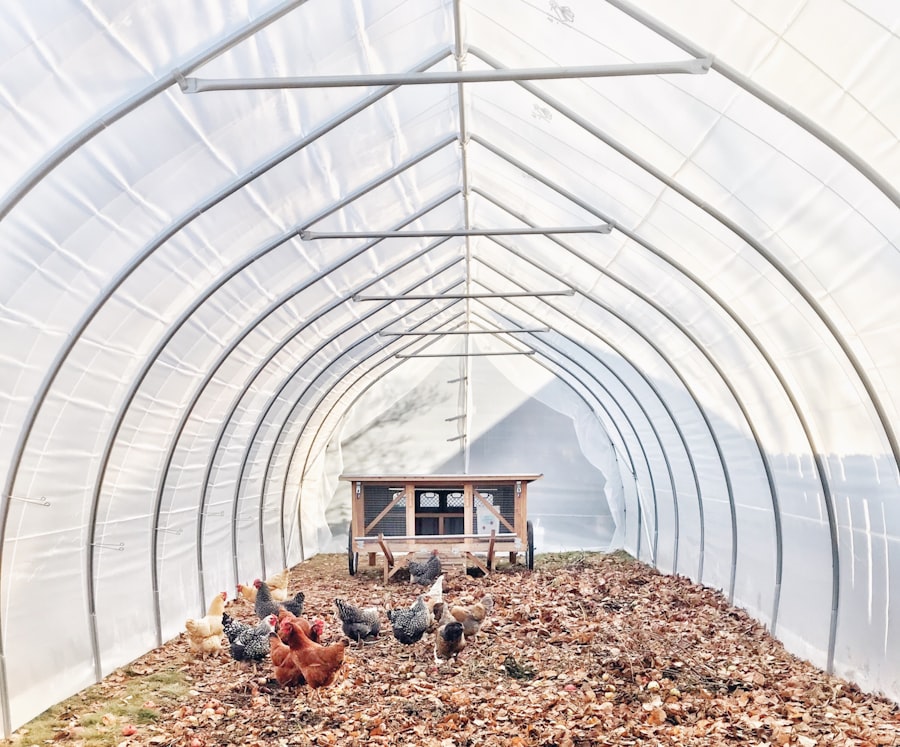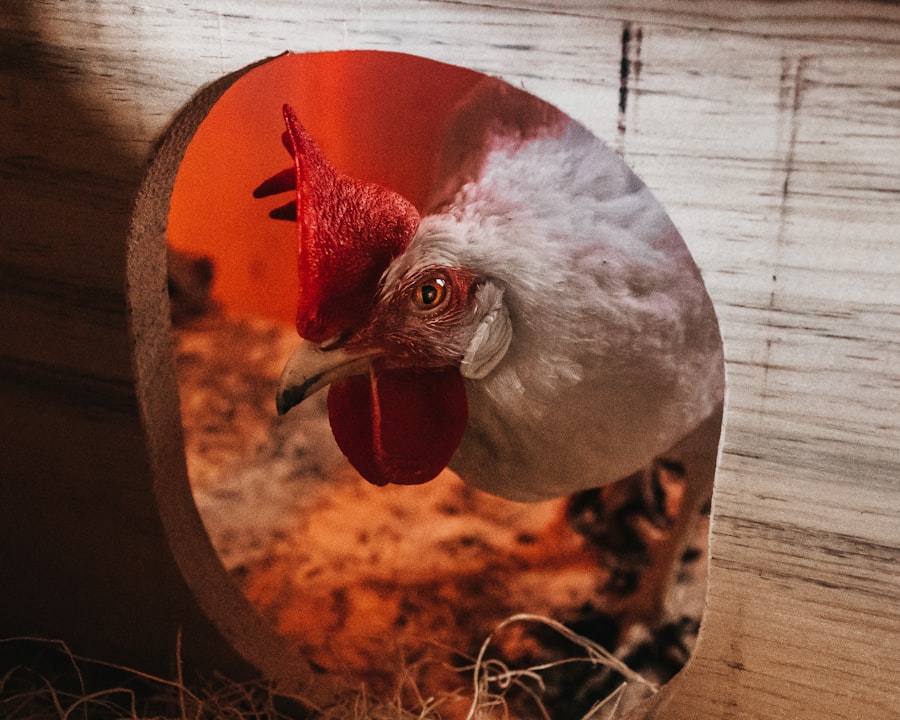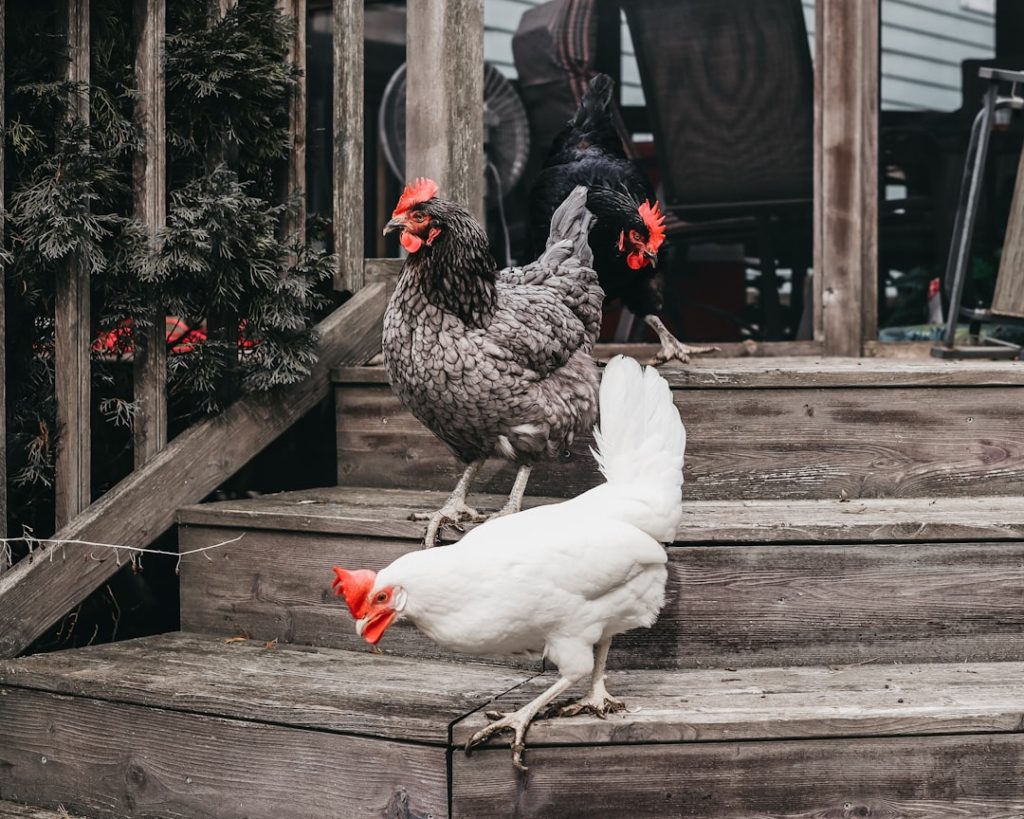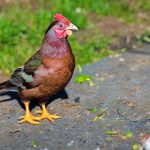Chickens are social creatures with innate foraging and exploratory behaviors. They possess a strong homing instinct, typically returning to their coop at day’s end. Comprehending these natural behaviors is essential for ensuring the safety and security of chickens in captivity.
By recognizing their instincts, caretakers can better predict their actions and implement appropriate measures to prevent escapes or dangerous situations. Chickens are inherently curious, often engaging in pecking and scratching behaviors to locate food. This natural foraging instinct may lead them to wander in search of new food sources, potentially increasing the risk of escape from their designated area.
As prey animals, chickens maintain a heightened state of alertness, constantly scanning their environment for potential threats. This vigilance can result in easily startled birds that may flee from perceived dangers. Understanding these behavioral traits allows caretakers to create a secure environment that accommodates the chickens’ natural instincts and tendencies.
Table of Contents
- 1 Clipping the wings of your chickens
- 2 Providing a secure and spacious coop
- 3 Using chicken-friendly fencing
- 4 Training your chickens to stay in their designated area
- 5 Providing enrichment and entertainment for your chickens
- 6 Monitoring and addressing any potential escape routes or hazards
- 7 FAQs
- 7.1 What are some reasons why chickens might fly away?
- 7.2 How can I prevent my chickens from flying away?
- 7.3 Is it safe to clip my chickens’ flight feathers?
- 7.4 What are some other methods for keeping chickens from flying away?
- 7.5 Are there any legal restrictions on keeping chickens from flying away?
Key Takeaways
- Chickens are social animals that have natural instincts to forage, roost, and explore their surroundings.
- Clipping the wings of chickens can prevent them from flying over fences and escaping their designated area.
- A secure and spacious coop is essential for providing chickens with a safe and comfortable living environment.
- Chicken-friendly fencing, such as hardware cloth or electric netting, can help keep chickens contained while still allowing them to roam freely.
- Training chickens to stay in their designated area can be achieved through positive reinforcement and consistent boundaries.
Clipping the wings of your chickens
How Wing Clipping Works
One effective way to prevent chickens from escaping is by clipping their wings. This process involves trimming the primary feathers on one wing, which prevents them from achieving lift and flying over fences or other barriers. It’s important to note that wing clipping should be done with caution and precision to avoid causing any harm or discomfort to the chicken.
Limitations of Wing Clipping
It’s also important to keep in mind that wing clipping is not a permanent solution, as the feathers will eventually grow back and will need to be trimmed again.
Alternative Solution: Chicken Saddles or Aprons
Another method for preventing escape through flying is by using chicken saddles or aprons. These are protective garments that are worn by chickens to prevent injury and feather damage caused by other chickens during mating or pecking. By using chicken saddles, you can reduce the risk of injury and prevent any potential escape attempts caused by aggressive behavior within the flock.
Conclusion
Overall, wing clipping and using protective garments can be effective measures for preventing escape and ensuring the safety and security of your chickens.
Providing a secure and spacious coop

A secure and spacious coop is essential for keeping chickens safe and preventing them from escaping. The coop should be constructed with sturdy materials and secure locks to prevent predators from gaining access and to keep the chickens contained. It’s important to regularly inspect the coop for any signs of wear and tear, as well as to ensure that there are no gaps or openings that could allow chickens to escape or predators to enter.
In addition to being secure, the coop should also provide ample space for the chickens to move around comfortably. Overcrowding can lead to stress and aggression within the flock, which can increase the likelihood of escape attempts and injuries. Providing enough space for the chickens to roost, nest, and move around freely will help maintain a harmonious environment and reduce the risk of escape.
Additionally, a well-designed coop should include proper ventilation, natural light, and nesting boxes to ensure the overall health and well-being of the chickens.
Using chicken-friendly fencing
Using appropriate fencing is crucial for keeping chickens contained within their designated area. The fencing should be tall enough to prevent chickens from flying over it and strong enough to withstand attempts at digging or pushing through. Additionally, the fencing should have small enough gaps to prevent predators from gaining access while still allowing for adequate airflow and visibility.
Electric fencing can also be an effective deterrent for both predators and chickens attempting to escape. The mild shock delivered by electric fencing can discourage predators from attempting to breach the perimeter while also discouraging chickens from attempting to fly over or dig under the fence. It’s important to regularly inspect electric fencing for any signs of damage or malfunction to ensure that it remains an effective barrier for keeping chickens contained.
Training your chickens to stay in their designated area
Training your chickens to stay within their designated area can be a proactive approach to preventing escape attempts. This can be achieved through positive reinforcement training, where chickens are rewarded for staying within the boundaries of their designated area. This can be done by providing treats or food within the designated area, which encourages the chickens to remain within that space.
Another method for training chickens is by using visual barriers or deterrents, such as flags or streamers, which can help establish clear boundaries for the chickens. By consistently reinforcing these boundaries, chickens can learn to recognize and respect their designated area, reducing the likelihood of escape attempts. It’s important to be patient and consistent with training efforts, as it may take time for chickens to learn and adapt to new boundaries.
Providing enrichment and entertainment for your chickens

Keeping Chickens Occupied with Toys and Treats
For example, hanging treats or vegetables from a string can encourage chickens to peck and play, keeping them occupied and less likely to attempt an escape.
Providing Access to a Larger Outdoor Area
Additionally, allowing chickens access to a larger outdoor area for foraging and exploring can provide mental stimulation and reduce the urge to escape in search of new experiences.
Natural Elements for Engagement and Contentment
Providing a variety of natural elements such as logs, branches, and dust baths can also help keep chickens engaged and content within their designated area.
Monitoring and addressing any potential escape routes or hazards
Regular monitoring of the chicken’s environment is essential for identifying and addressing any potential escape routes or hazards. This includes inspecting fencing for signs of wear or damage, as well as checking for any gaps or openings that could allow chickens to escape or predators to gain access. It’s also important to regularly assess the surrounding area for any potential hazards such as toxic plants, sharp objects, or other dangers that could pose a risk to the chickens.
In addition to monitoring the physical environment, it’s important to observe the behavior of the chickens for any signs of restlessness or distress that could indicate a desire to escape. By being proactive in addressing potential escape routes or hazards, you can help ensure the safety and security of your chickens while also promoting a harmonious and enriching environment for them to thrive in. In conclusion, understanding the natural behavior of chickens is essential for creating a safe and secure environment that prevents escape attempts and promotes the overall well-being of the flock.
By implementing measures such as wing clipping, providing a secure coop and fencing, training, enrichment, and regular monitoring, you can help keep your chickens safe and content within their designated area. By taking a proactive approach to preventing escapes, you can create a harmonious environment where your chickens can thrive and flourish.
If you’re looking for more tips on keeping your chickens safe and secure, check out this article on how to build a secure chicken coop in Muskegon. It offers valuable insights on creating a safe and comfortable environment for your chickens to prevent them from flying away.
FAQs
What are some reasons why chickens might fly away?
Chickens may fly away due to fear, seeking food or water, or to escape predators. They may also fly away if they are not provided with adequate space or if they are feeling stressed.
How can I prevent my chickens from flying away?
To prevent chickens from flying away, you can clip their flight feathers, provide adequate space and enrichment in their coop, and ensure they have access to food, water, and shelter. Additionally, keeping them in a covered run or using netting can help prevent them from flying away.
Is it safe to clip my chickens’ flight feathers?
Clipping a chicken’s flight feathers is a safe and common practice that does not cause them harm. It simply prevents them from being able to fly long distances or gain significant height.
What are some other methods for keeping chickens from flying away?
Other methods for keeping chickens from flying away include using deterrents such as reflective objects or noise makers, providing a secure and enclosed coop, and training them to stay within a certain area using positive reinforcement.
Are there any legal restrictions on keeping chickens from flying away?
In some areas, there may be local ordinances or regulations regarding the keeping of chickens and the measures that must be taken to prevent them from flying away. It is important to check with local authorities to ensure compliance with any applicable laws or regulations.
Meet Walter, the feathered-friend fanatic of Florida! Nestled in the sunshine state, Walter struts through life with his feathered companions, clucking his way to happiness. With a coop that’s fancier than a five-star hotel, he’s the Don Juan of the chicken world. When he’s not teaching his hens to do the cha-cha, you’ll find him in a heated debate with his prized rooster, Sir Clucks-a-Lot. Walter’s poultry passion is no yolk; he’s the sunny-side-up guy you never knew you needed in your flock of friends!







